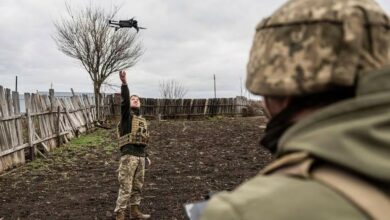Royal Marines Test Experimental Drone Logistics
On recent maneuvers on the island of Cyprus, a group of Royal Marines tested new operational concepts, specifically how unmanned aerial vehicles can provide them with enhanced reconnaissance and logistics capabilities on the battlefield.
The testing, carried out in November, featured a drone carrying supplies steadily delivering parcels to a group hunkered down ashore, demonstrating its effectiveness under realistic operational conditions.
The Malloy T-150 heavy lift drone, currently being developed by the Royal Marines in collaboration with industry partners, is hoped to even reach the capacity to transport wounded soldiers for medical evacuation.
Did someone order a bergen? Malloy drones drop rucksacks to Royal Marines of @40commando in #Cyprus as the #LRGX task group led by @hms_albion conducts trials in the field with tomorrow's tech shaping the Future Navy and Future Commando Force.https://t.co/K06WZjfkDm pic.twitter.com/kcC1ANNWYq
— Royal Marines (@RoyalMarines) November 6, 2020
Commandos have long needed new ways to receive munitions, food, and information. Prior to this technology, transport and resupply was accomplished solely through human labor.
Royal Marines Officer Major Kris Dawson told Forces.net that the drones’ presence can “bridge pretty significant gaps” in resupplying marines on the ground, going as far as to say that it was “an absolute game-changer.”
Experimental Testing of ‘Ghost Drone’
In addition to the Malloy system, personnel have also run trials of the “Ghost” drone concept to gauge its performance in intelligence, surveillance, and reconnaissance. This nascent technology is still limited to a 20 kilometer (12.4 miles) range but can capture thermal images and footage from 3,000 feet above sea level.
One notable feature of the Ghost is that multiple drones can be deployed to travel pre-programmed routes, offering a full view of the battlefield to a single commander. This technology is being developed to identify potential threats and notify the pilot without the need for a person to constantly scan drone feeds.
Improved Communication
Colonel Chris Haw shared additional developments by the Royal Marines during their Cyprus shoreline maneuvers — in particular, a communication system to connect personnel on the ground to the ship and all the way back to UK headquarters.
An intelligence network this vast would allow headquarters to have a better understanding of the situation on the ground, while the experimental technology acts as a vessel for data to stream from the drone, to operation headquarters, and then to troops.












